Montana
July 18 - Aug. 2

The power house and dam at the Fort Peck Reservoir on the Missouri
River in Montana. This is the longest earth-filled dam in the U.S. The
earth filling was obtained by dredging the river bottom upstream and
downstream of the dam site. We camped just downstream of the dam
at a Bureau of Reclamation campground. We were supposed to have
electricity at our campsite, but the power was off, even though we were
so close to the power house. Bummers!
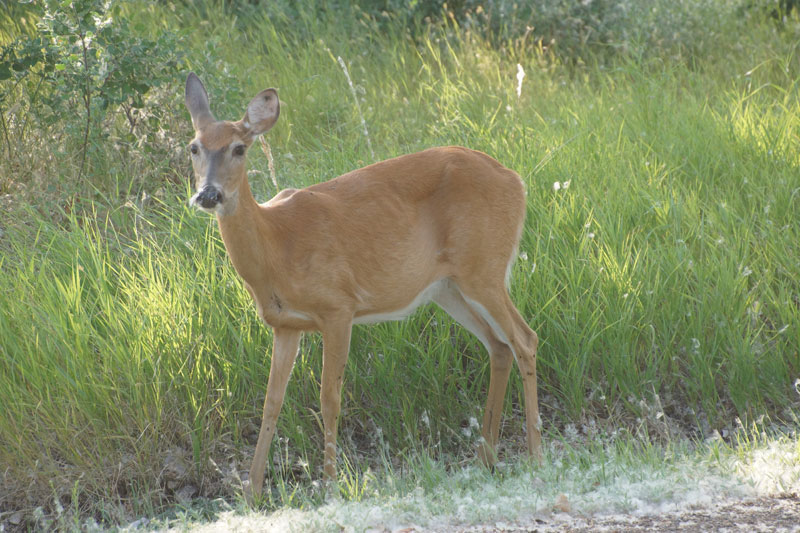
This deer found that the campground was a safe place to be, since
hunting is not allowed here.
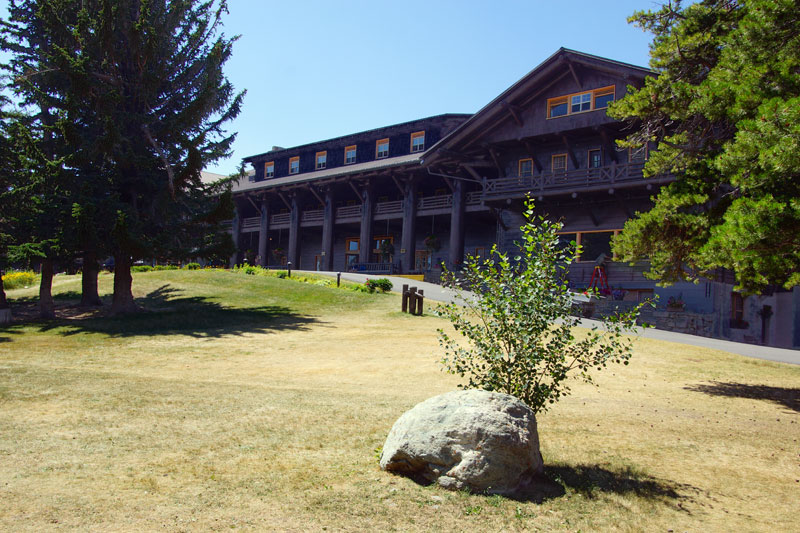
Montana between Fort Peck and Glacier National Park was a big
bore, so no pictures of that segment of our travels.This is the Glacier
Park Hotel at East Glacier. It was built by the Great Northern Railway
in 1913 to attract travelers to this area.

The main lounge in the interior of the hotel. The huge pillars
inside are douglas fir logs, while the outside pillars are cedar to
better protect from the weather.
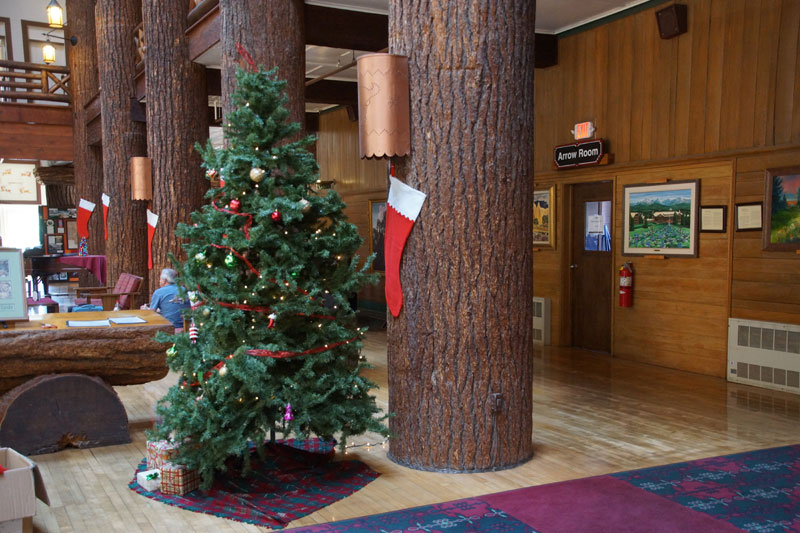
A hotel employee was putting up Christmas decorations. I
asked why, and was told that they celebrate Christmas in July, since
they are closed during the Christmas holiday in December.

Glacier National Park now has a reservation system for admission
to the park. However, you can enter the park without an entry permit
before 9 am and after 3 pm. We didn't have an entry permit so we took
advantage of this window to go into the Two Medicine area of the park
to fix dinner at a picnic area overlooking one of the lakes. This
mountain goat strolled by during dinner time.

With the new reservation system, almost all campsites in the park
are reservable and are full during the summer season. However, the
Rising Sun campground in Glacier is non-reservable, first come - first
served. So our plan was to spend the night at a turnout on the highway
near the park entrance and then drive into the park first thing in the
morning to get a site at Rising Sun.
The turnout we stayed at had this statue of an indian on his horse and
pulling a travois; this is how they moved their household stuff when
moving camp.
Our plan worked; we got a great site at Rising Sun and used the shuttle
system to get around in the park without having to drive.

Some of the mountain scenery at Glacier; this view is at Logan
Pass looking to the west (sort of).

More mountain scenery at Logan Pass - looking to the east. You can
see part of the Going to the Sun highway, which was a real engineering
achievement to build.
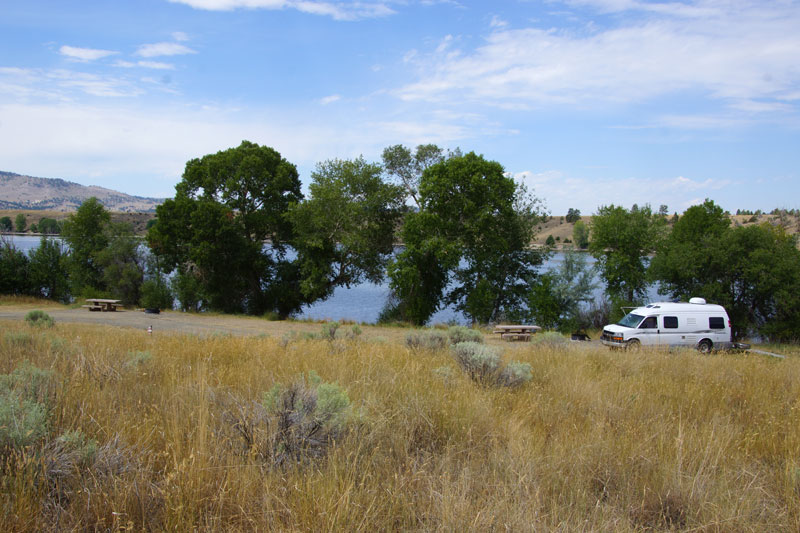
After Glacier we headed south to the Helena area and camped for a
few days in Hellgate Campground on the Canyon Ferry reservoir. The
reservoir was created by damming the Missouri River.The
campground was pretty empty midweek, but filled up on the weekend.

Unfortunately, what filled up the campground were motorboaters,
especially jet skiers. Those infernal machines are really noisy and
make a lot of waves, disturbing those who prefer quieter ways of
enjoying the water, like kayakers, paddle boarders, etc.
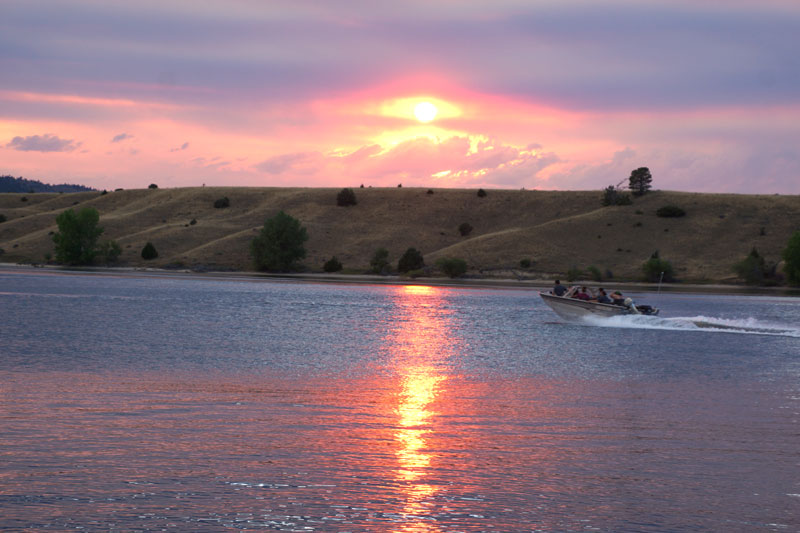
But the sunsets were pretty.

The waves created by boaters had an interesting effect on the
sunsets.
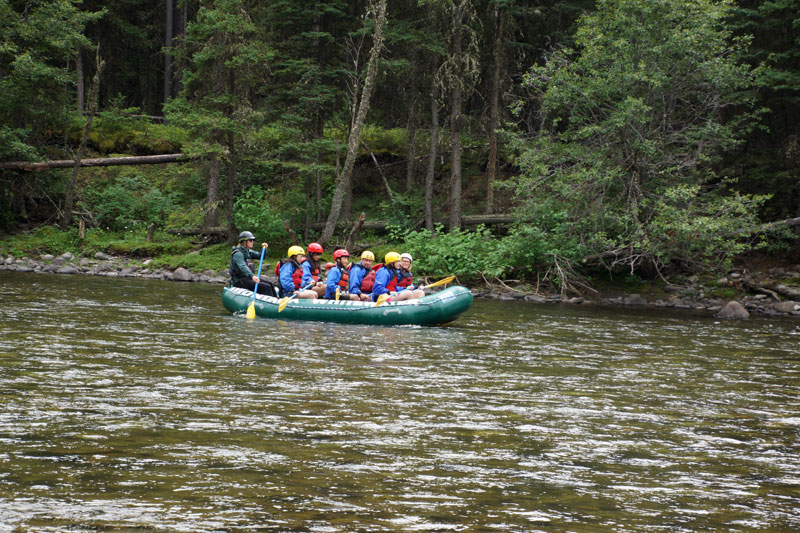
After shopping and taking care of church business in Helena, we
headed south towards Yellowstone. We found a campsite on the Gibbon
River where we could watch whitewater rafters float by.
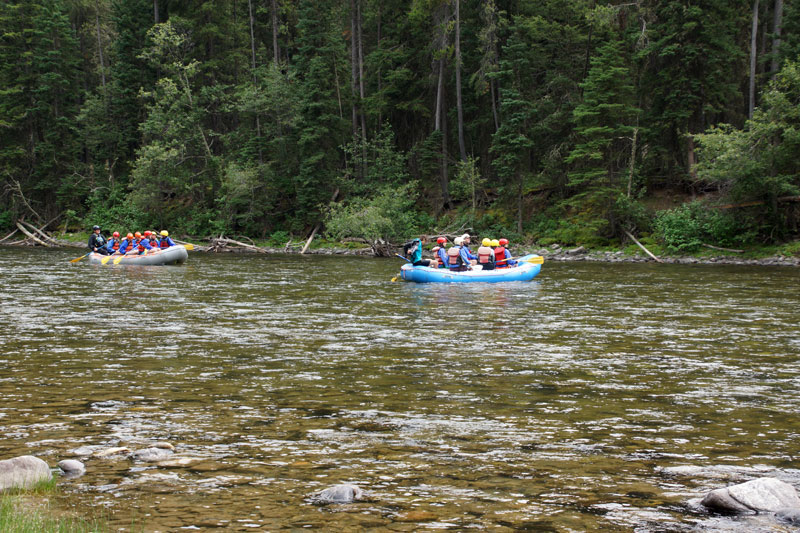
They seemed to float by in bunches, so they must be social
"creatures".

Here is a group of six rafts heading into the next pitch of white
water. Watching the rafts float by was a pleasant way to end a day of
driving.















